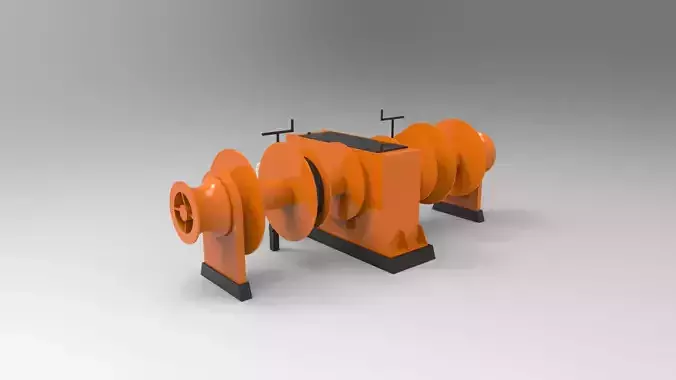1/9
The windlass /ˈwɪndləs/ is an apparatus for moving heavy weights. Typically, a windlass consists of a horizontal cylinder (barrel), which is rotated by the turn of a crank or belt. A winch is affixed to one or both ends, and a cable or rope is wound around the winch, pulling a weight attached to the opposite end. The Greek scientist Archimedes was the inventor of the windlass.[1]The oldest depiction of a windlass for raising water can be found in the Book of Agriculture published in 1313 by the Chinese official Wang Zhen of the Yuan Dynasty (fl. 1290–1333).Vitruvius, a military engineer writing about 28 BC, defined a machine as a combination of timber fastened together, chiefly efficacious in moving great weights. About a century later, Hero of Alexandria summarized the practice of his day by naming the five simple machines for moving a given weight by a given force as the lever, windlass, screw for power, wedge, and tackle block (pulley). Until nearly the end of the nineteenth century it was held that these five mechanical powers were the building blocks from which all more complex assemblages were constructed.' [3]During the Middle Ages the windlass was used to raise materials for the construction of buildings such as in Chesterfield's crooked spire church.[4]A windlass cocking mechanism on crossbows was used as early as 1215 in England, and most European crossbows had one by the Late Middle Ages.[5]Windlasses are sometimes used on boats to raise the anchor as an alternative to a vertical capstan (see anchor windlass).The handle used to open locks on the UK's inland waterways is called a windlass.Windlass can be used to raise water from a well. The oldest description of a well windlass, a rotating wooden rod installed across the mouth of a well, is found in Isidore of Seville's (c. 560–636) Origenes (XX, 15, 1–3).[6]Windlass have also been used in gold mining. A windlass would be constructed above a shaft which allowed heavy buckets to be hauled up to the surface.[7] This process would be used until the shaft got below 40 metres deep when the windlass would be replaced by a 'whip' or a 'whim'.
REVIEWS & COMMENTS
accuracy, and usability.









